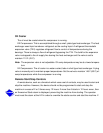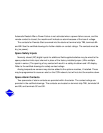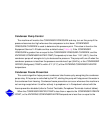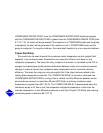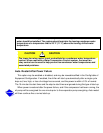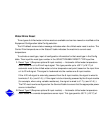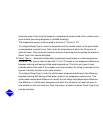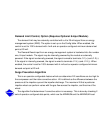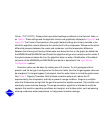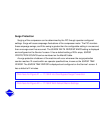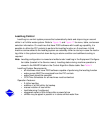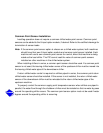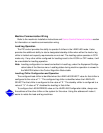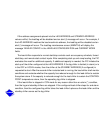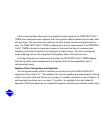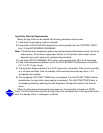
Points, (T1/P1;T2/P2). These points have default settings as defined on the Service1 table, or
on Table 4. These settings and the algorithm function are graphically displayed in Figure 21 and
Figure 22. The 2 sets of load points on this graph (default settings are shown) describe a line
which the algorithm uses to determine the maximum lift of the compressor. Whenever the actual
differential pressure between the cooler and condenser, and the temperature difference
between the entering and leaving chilled water are above the line on the graph (as defined by
the MINIMUM and MAXIMUM Load Points) the algorithm will go into a corrective action mode. If
the actual values are below the line, the algorithm takes no action. Modification of the default
set points of the MINIMUM and MAXIMUM load points is described in the Input Service
Configurations section.
Corrective action can be taken by making one of 2 choices. If a hot gas bypass line is
present, and the hot gas is configured on the Service1 table, then the hot gas bypass valve can
be energized. If a hot gas bypass if not present, then the action taken is to hold the guide vanes.
See Table 4, Capacity Overrides. Both of these corrective actions will reduce the lift
experienced by the compressor and help to prevent a surge condition. Surge is a condition
when the lift becomes so high that the gas flow across the impeller reverses. This condition can
eventually cause machine damage. The surge prevention algorithm is intended to notify the
operator that machine operating conditions are marginal, and to take action, such as lowering
entering condenser water temperature, to help prevent machine damage.



